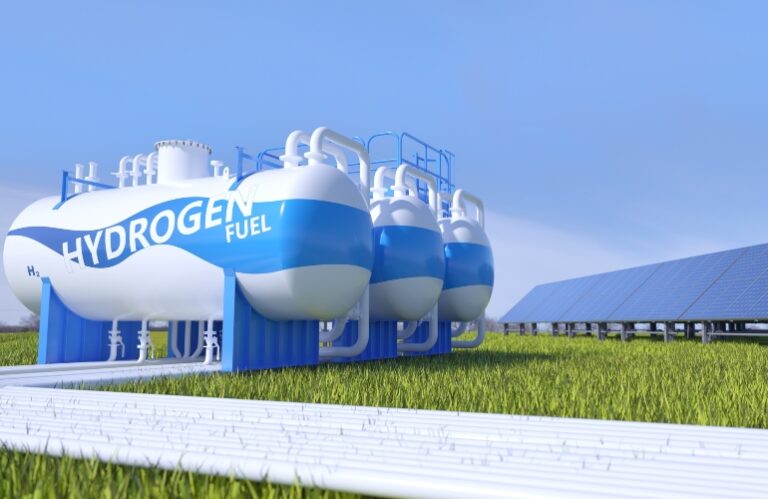Today, the U.S. Treasury Department and the IRS released final rules for this section 45V tax credit for clean hydrogen production established by the Inflation Reduction Act. The final rules address several key issues to help the industry grow and advance projects while adhering to the law’s emissions requirements for qualifying clean hydrogen.
The final rules announced today clarify how producers of hydrogen, including those using electricity from different sources, natural gas with carbon capture, renewable natural gas and coal mine methane, can determine if they qualify for the credit. To qualify for the full credit, projects must also meet applicable wage and apprenticeship standards, continuing the Biden-Harris administration’s commitment to putting workers at the center of the clean energy economy and ensuring that clean energy jobs are high-paying jobs.
“These rules include useful feedback from companies planning investments that will drive significant deployment of clean hydrogen in heavy industry and help create good-paying jobs,” said Wally Adeyemo, Minister of Finance. “The Inflation Reduction Act and the Bipartisan Infrastructure Law represent the world’s most ambitious policy support for the clean hydrogen industry. Scaling up the production of low-carbon fuels such as hydrogen will be a major boost for difficult-to-transition sectors of our economy, such as heavy industry.”
The final rules come after reviewing approximately 30,000 public comments and months of collaboration between the Treasury Department, the IRS, the Department of Energy and the Environmental Protection Agency. In the coming weeks, the Department of Energy will release an updated version of the 45VH2-GREET model, which manufacturers will use to calculate the Section 45V tax credit.
“Clean hydrogen can play a critical role in decarbonizing multiple sectors of our economy, from industry to transportation, from energy storage and beyond,” said Deputy Secretary of Energy David M. Turk. “The final rules announced today put us on a path to accelerate the deployment of clean hydrogen, including at the Department of Energy’s Clean Hydrogen Hubs, leading to new economic opportunities across the country.”
The rules provide greater investment certainty for hydrogen production via both electricity and methane, while meeting regulatory life cycle emissions standards. The value of the tax credit is based on the greenhouse gas emissions during the life cycle of hydrogen production. To qualify as clean hydrogen under the law, greenhouse gas emissions during the life cycle of the hydrogen production process must not exceed 4 kg of carbon dioxide equivalents (CO2e) per kilogram of hydrogen produced.
Qualifying clean hydrogen falls into four credit levels, with hydrogen produced with the lowest greenhouse gas emissions receiving the largest credit. Direct and significant indirect emissions must be taken into account when calculating the life cycle assessment of greenhouse gases for the tax credit.
“Over the past two years, our administration has listened to hydrogen industry stakeholders, states, advocates and others,” said John Podesta, Senior Advisor to the President for International Climate Policy. “The extensive revisions we made in this final rule provide the certainty hydrogen producers need to advance their projects and make the United States a global leader in truly green hydrogen.”
Electrolytic hydrogen
For the production of hydrogen using electricity (green hydrogen using renewable energy sources and pink hydrogen using nuclear energy), the final rules include safeguards that ensure that electricity consumption for hydrogen meets regulatory standards for life cycle greenhouse gas emissions, including that the life cycle assessment takes into account both direct and significant indirect emissions. emissions from hydrogen production. As the final regulations explain, without these safeguards, the additional load on the grid from hydrogen production will lead to induced emissions.
However, the final rules differ from the proposed rules in a number of ways. The final rules define electricity generation as incremental if the generator begins commercial operations within 36 months of the hydrogen plant’s commissioning, or to the extent that a plant increases its capacity within that period. The final rules provide additional options to demonstrate incrementality.
Electricity generated in states with robust greenhouse gas emissions caps, combined with clean electricity standards or renewable energy standards that meet the criteria established in the final rules, will be considered incremental as these policies together reduce significant induced emissions from can prevent the production of hydrogen. The Treasury Department has determined that Washington and California policies currently meet these criteria. Even more states could meet the criteria in the future if they implement strong policies that meet the criteria.
Electricity from a generator that has taken carbon capture and sequestration measures within a period of 36 months before the hydrogen plant comes into service is considered incremental.
The final rules maintain the proposed requirement that an energy source match the electricity produced in the same hour as a hydrogen plant uses electricity to produce hydrogen. This can be verified through the EPA’s Energy Attribute Certificate program. Beginning in 2030, all qualified facilities will require hourly matching.
Once hourly matching is required, the final rules will allow hydrogen producers to determine electricity-related life cycle emissions on an hourly basis, as long as annual emissions from the hydrogen production process remain below the Section 45V limit of 4 kg CO2e per kilogram. hydrogen produced.
“Clarity is critical, and this release is an important step forward for the clean hydrogen industry,” said Jacob Susman, CEO of clean hydrogen developer Ambient Fuels. “The time for debate about the rules is over. Now is the time to unite behind these guidelines so we can start implementing projects, scaling up clean hydrogen production and decarbonizing our most carbon-intensive sectors, such as chemicals, ammonia, mobility and other heavy industries. These guidelines allow us to focus on what matters most: reducing emissions and building a cleaner, more sustainable future.”
News item from the US Treasury Department


